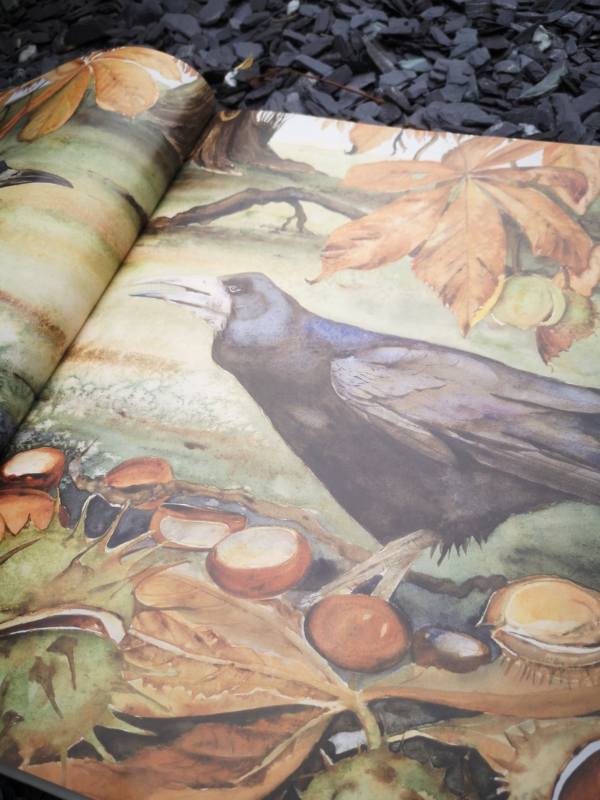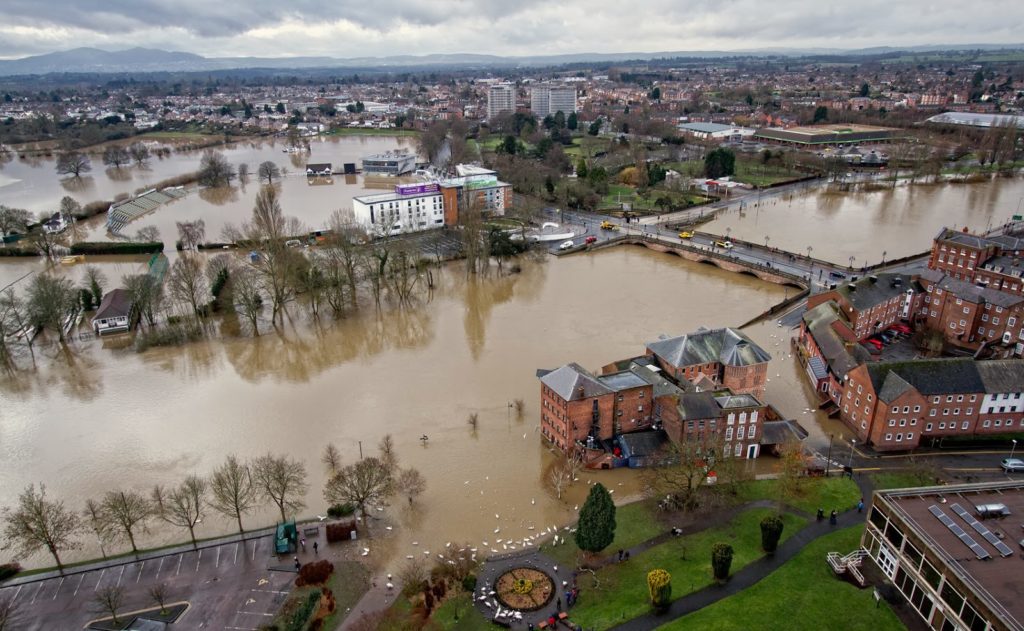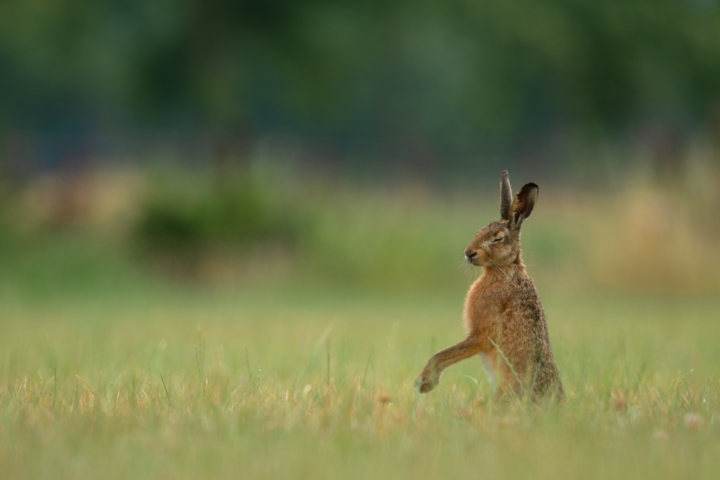Regain lost words and seek out nature-based solutions. Simple swaps, which we’ve heard so much about during Zero Waste Week, are a great way to make a difference. But, alongside a focus on stuff (avoiding buying stuff; wasting less stuff), I want to bring in another dimension. For this week, think also zero waste of nature and nature knowledge. Take on board nature-based solutions.
If we’re to find solutions for a better environment, I feel we need to understand better how the natural world works. We rely on nature more than we realise – we need to regain lost words and traditional knowledge. And, even, change the way we think. Ditch black and white thinking: adopt holistic thinking.
Lost Words
Once upon a time, words began to vanish from the language of children. They disappeared so quietly that at first almost no one noticed – fading away like water on a stone. The words that those children used to name the natural world around them: acorn, adder, bluebell, bramble, conker – gone! Fern, heather, kingfisher, otter, raven, willow, wren… all of them gone! – Robert Macfarlane, The Lost Words: A Spell Book.
Robert MacFarlane’s book and Jackie Morris’s illustrations, shine a light on nature words that we’ve lost from the Oxford Children’s Dictionary. We’ve replaced them with technological words like Broadband, Wifi, cut-and-paste and voice-mail.
These lost words are associated with ways of living within a landscape that have been with us for eons. Yet, they seem to be sliding from view.
How on earth is this relevant? The relevance starts with the premiss that we protect what we know, and what we understand. Start with one animal or plant, know it well, and you could set off a chain reaction in your head, and in your world. Even THE World.
A Nature Chain Reaction
If nature has become sidelined for you, how do you reconnect? Where do you start and where would this go? You start small…
Feed the Birds
So, you decide to put up a bird feeder, in a tree in sight of your living room window. Blue tits come visiting and set up home, much to the delight of your youngest, Johnny, who really takes to them. You watch them every day and become used to their activity and habits. You watch them alight on to the bird feeder in winter, and on warmer days, tickle the soil for insects and grubs.
So sweet you may think. But, how is this going to help when there are fires burning in the Amazon? Good point – we’ll return to it.
Start a Bug Hotel
Johnny now understands that birds eat insects and grubs as well as seeds. So, you set up a bug hotel, and make piles of twigs and leaves in corners. The birds come visiting and all is well.
This was a dry and dusty corner of the garden, on a slope, where the soil had washed away. But soon the soil becomes moist, crumbly and dark. Earthworms wriggle beneath, and strangely, the soil stops washing away. Weeds sprout.
Part of life’s ecosystem is regenerating in your garden, but you know you could do more.
You see an article in a gardening magazine about how to create a wildlife garden. The ‘whys’ are listed: wild flowers to feed insects that we need to pollinate crops and keep crop pests at bay; and undisturbed soil that builds up an ecosystem underground – a carbon-storing soil. And more….

Take up Your Block Paving – Start a Wildlife Garden
You would extend the area around the bug hotel, and piles of sticks and leaves. But, there is some block paving in the way. Do we need it, you ask? No – so the block paving comes out and a wildlife garden begins.
Johnny develops the irksome habit of bringing different types of bugs into the house. He says ‘THIS one is like THIS one, and THAT one is like THAT one. The blue tits eat THIS one, and THAT one eats blue tit poo’. There’s some garbled speech which might translate as ‘Slugs eat the rotting dandelions’. The wonders of the world!
Meanwhile, the wild flowers grow, and the bees buzz…..
Support a Farmer Who’s Saving Birds
You’re heartened by Johnny’s rate of learning, and his capacity to point out all sorts of relationships that you’d never thought of before. All to the good, because he certainly isn’t good at maths. With maths, you’re either right or you’re wrong – it’s all back and white. Nature is a confounding web of relationships and feedback loops.
An email pops into your inbox. It seems Johnny has won a children’s competition you’d even forgotten you’d entered him for. It’s to go bird watching on a farm. A farmer is running an open day – he’d advertised it over a month ago.
He says birds are returning to his farm once more, now that he’s restored a hay meadow. He’s turned some of the fields over to pasture. The hay feeds the cattle in winter, and the birds and insects year-round. He’s also reducing his use of chemicals on the cornfields, and embracing traditional knowledge and old farming ways.
The visit was a hit with Johnny.

Build Up Your Soils; Tackle Flooding
Into the bargain you find out from the farmer and wife team that their changes have increased the water-retention and carbon storing capacity of their farm. The results of a survey on their land have just come in.
Good news, as you’d heard talk of possible floods this coming winter, and you’re worried for friends living downstream. They’ve been badly flooded before, and they’re already wondering whether to make ’emergency preparations’.
It all makes sense now. The farm is like your wildlife garden on a larger scale. After hearing about the beneficial effects of wildlife-friendly farming on soil, you decide to do some soil testing at home. You’ve found this US quick guide 10 Easy Soil Tests That Pinpoint Your Garden’s Problems. You could flip that around and think 10 Easy Soil Tests That Pinpoint Your Garden’s Potential. That’s potential to be a nature-based solution to climate change (if many people did this).
Measure your soil organisms, your earthworms, plant residue, and water-holding capacity. Maybe you could work out your carbon-storing capacity? How many wildlife-friendly gardens and farms would it take?
Nature-Based Solutions and Holistic Thinking
Back at home, you’re watching news footage of burning fires all over the Amazon. The reporter keeps saying the word soya. Soya that people eat, and soya fed to animals. Then he mentions cows. Johnny says ‘But, cows are fed on grass and hay!’ That’s a radical thought.
Johnny’s got into the habit of critical thinking. You hear that we feed soya to pigs and chickens, but you decide not to mention it to Johnny. We never used to, though. We fed them on food scraps, fallen apples and waste grain. That’s nature-based solutions and traditional knowledge for you.
Last year’s floods come on the news… and it gets discussed in school. Johnny goes in to school and says ‘Our garden is holding back the flood waters’.
Do as Johnny says:
TAKE UP YOUR BLOCK PAVING – PLANT A WILDLIFE GARDEN.




